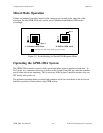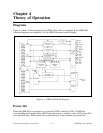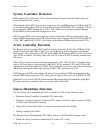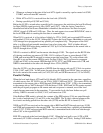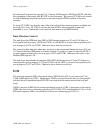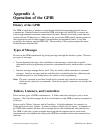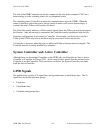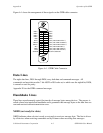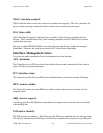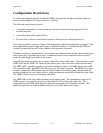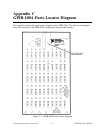Operation of the GPIB Appendix A
GPIB-100A User Manual A-4 © National Instruments Corporation
NDAC (not data accepted)
NDAC indicates when a device has or has not accepted a message byte. The line is driven by all
devices when receiving commands and by Listeners when receiving data messages.
DAV (data valid)
DAV tells when the signals on the data lines are stable (valid) and can be accepted safely by
devices. The Controller drives DAV when sending commands, and the Talker drives it when
sending data messages.
The way in which NRFD and NDAC are used by the receiving device is called the Acceptor
Handshake. Likewise, the sending device uses DAV in the Source Handshake.
Interface Management Lines
Five lines are used to manage the flow of information across the interface.
ATN (attention)
The Controller drives ATN true when it uses the data lines to send commands and false when it
allows a Talker to send data messages.
IFC (interface clear)
The System Controller drives the IFC line to initialize the bus to become Controller-In-Charge.
REN (remote enable)
The System Controller drives the REN line, which is used to place devices in remote or local
program mode.
SRQ (service request)
Any device can drive the SRQ line to asynchronously request service from the Active Controller
with the SRQ line.
EOI (end or identify)
The EOI line has two purposes. The Talker uses the EOI line to mark the end of a message string.
The Active Controller uses the EOI line to tell devices to identify their responses in a parallel poll.



